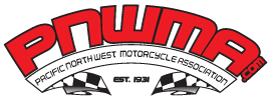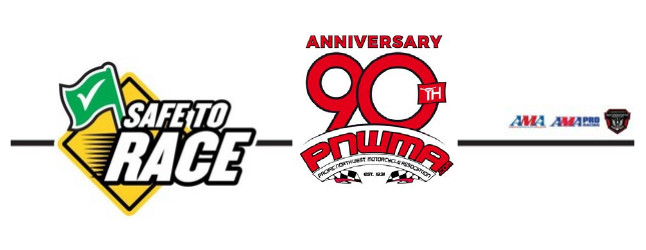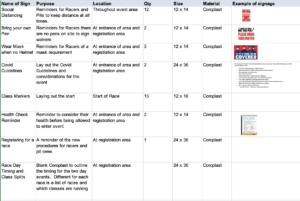Revised: Jan 22, 2021
Off-Road Dirt Bike Events – Best Practices Toolkit
The PNWMA wishes to ensure there is a safe return to racing and ensure the racers, organizers, and spectators are following the guidelines laid out by the Province of BC.
Guidance for best practices is adapted from the collective input from a diverse group of motorsports professionals, inclusive of the GNCC, AMA, and a number of other motorsport organizations, with the common goal to reopen motorcycle recreational riding areas. All aspects of the collective task force effort are based on a full understanding of necessary safe practices, including safe distancing and Personal Protective Equipment (PPE) requirements, local, provincial and national guidelines and the generally accepted attention to public health that will be expected of every Host Club planning to conduct a race event in this COVID-19 changed environment.
The World Health Organization (WHO) recommends that event organizers consider the following three phases in planning appropriate preparedness health measures for sporting events:
-
Planning phase – the period before the event when operational plans for health and security services during the event are developed, tested and revised;
-
Operational phase – the period after plans are finalized and event services are implemented; and
-
Post-event phase – the period after the event finishes when participants are returning home and organizers are reviewing the event results and any follow-up actions that may be necessary, including reviewing lessons learned.
It is the mission of the PNWMA to provide guidelines and best practices consistent with current health and safety standards for social distancing to enable off-road dirt bike events (outdoor recreation facilities) to resume limited operations. These limited operations will be conducted with full regard to public safety guidelines regarding social distancing and proper health measures to limit or eliminate exposure.
To accomplish this goal, the events will initially be planned to be restricted to 50 riders per race, however, are subject to the restrictions of BC Public Health Orders at the time of event. There will be 3- 4 separate races in a weekend, spread out to avoid clusters. Sign up, riders meeting and staging will be designed to avoid clusters of riders and ensuring the social distancing guidelines will be enforced, PPE will be required in accordance with BC guidelines, food and merchandise sales will be limited or eliminated, and health and safety messaging will be prominent throughout the facility.
The following plan is submitted for amateur racing for off-road dirt bike single track courses.
A. PLANNING PHASE
During the Planning Phase, The Host Club is to consult with the PNWMA to develop a health plan tailored for the physical area and the race event that meets the current guidelines as set forth by the BC Public Health Office, and BC Center for Disease Control (BCCDC). This includes contacting local RSTBC officials and developing a direct line of communication.
b. Contact with RSTBC:
Contact with the local RSTBC official is important. Review the plan and obtain approval for the race/event. The Host Club should appoint a liaison person to be the key contact with officials. Regular contact should be maintained throughout the planning period to share information, risk assessments, and plans. Furthermore, The Host Club should appoint a Health Representative who shall be both knowledgeable of all aspects of the Safe-to-Race Plan and responsible for implementation of these guidelines at the facility.
c. Risk Assessment:
The decision to host any event of any size or to restrict, modify, postpone or cancel an event should be based on a thorough risk assessment. The WHO recommends organizers take into account specific features when assessing the risks of their event. These include:
▪ Crowd density
▪ Nature of contact between participants
▪ Indoors vs. outdoors
▪ Registered vs. non-registered participants
▪ Age of participants and their potential to be in a high-risk group
▪ Profession of the participants and their possible previous exposure
▪ Number of participants coming from countries of areas affected by the COVID-19 outbreak within 14-days of the event
▪ Duration of the event
Off Road Dirt Biking is an activity conducted at an outdoor, well-ventilated, fresh-air facility situate on hundreds, of acres, generally located in rural areas. These venues provide plenty of space to easily accommodate physical distancing guidelines. There is no fixed or permanent seating any spectators are few.
Courses range from 15km to 50km in length and from 3 to 20 feet in width. Most of the course is woods riding. These courses are narrower and allow a more isolated riding experience.
Riders arrive in their personal transport vehicles, including but not limited to pick-up trucks, vans, motorhomes or campers. Accompanied mostly by one or two family members, they park and pit as a family unit, and are spaced wide apart through-out the facility.
Registration is required in order to participate. Riders bring their own motorcycles and their own riding equipment. Protective gear worn by off road riders includes full-face helmet, protective eyewear (goggles), gloves, boots, long-sleeve jersey, race pants, etc. They do not share their equipment.
Most riders are young, healthy and athletic, and include riders as young as 13 years old. They are not members of the elderly or the COVID-19 high-risk community. Most riders are students or young blue- collar professionals, and generally live within a 400-km radius of the event they are attending.
One key consideration for hosting a sporting event in the context of the current COVID-19 outbreak is whether the sport could be considered a lower or higher risk. Lower risk sports are those where physical distancing is possible. These will be even less of a risk if physical distancing advice for racers, pit crew and spectators is followed.
The goal for an off-road rider is to NOT come into contact with another rider. Given the key considerations above, off road dirt riding is a lower risk sport.
Initially, the resumption of activity will have limited numbers of participants and in compliance with social distancing guidelines. As the health situation improves, ultimately, competition will be resumed in full.
B. OPERATIONAL PHASE
1. Messaging & Risk Communication:
Regular communication between The Host Club, The PNWMA, participants and the local community where applicable, before, during and after the event is key. Key messaging should be coordinated and consistent. We do not want to give conflicting information.
This communication should include:
▪ Sharing information with public officials;
▪ Sharing information with participants on how to access health advice; and
▪ Sharing information with local population where applicable to alleviate health fears and concerns.
There are several ways to get your message out. Most effective means before and after an event include:
▪ PNWMA and Host Club website posts
▪ PNWMA and Host Club email list
▪ PNWMA and Host Club social sites
Messaging during an event usual involves:
▪ on-site signage
▪ on-site public address (PA) system
It is important to instill confidence in participants that good hygiene practices are in place.
The PN will prepare a well-designed signage package with appealing graphics and informative content, placed in prominent locations throughout the facility, that is easy to read and guides participants on best practices. Support this messaging with friendly and informative PA announcements throughout the event.
Here are some messages that organizers should make available for their events:
Prior to the event:
We hope to see you at our event. But your health and safety are most important to us. Here are some things you need to consider before your visit:
▪ Medics onsite the entire day
▪ Advance registration preferred to avoid contact with our volunteers. It’s fast, easy and safe
▪ Request PN License and Race Entry Sign Up Cards at front gate and bring completed to Registration
▪ Bring your own pen for Registration. We won’t share
▪ Protective barrier installed between staff and riders for Registration
▪ Cash sales require exact change. We won’t give you change
▪ Be prepared to take your trash home with you. We don’t want it
▪ The BC Public Health Office mandates persons who are sick with fever or cough, elderly or at high risk to stay at home. We do too. Please do not attend our event if you are at risk.
▪ Please take your temperature before you leave home. If you have a temperature of at least 100.4 you have a fever and should stay home.
▪ If you know you have had contact with someone diagnosed with having COVID-19 in the last 14 days, please stay home.
▪ Respect the local community – practice safe distancing and cleanliness if stopping at a local business
During the event:
We’re glad you’re here! Your health and safety remain our priority. Here are some things you need to know during your visit:
▪ Practice social distancing – stand 6’ apart
▪ Wear facemasks or helmets when closer than 6’ of others
▪ Use handwashing station often
▪ Don’t touch your face
▪ Park no less than 10’ apart from your neighbor
▪ If you are sick, please go home. You should not be here
▪ If you start to feel sick, go home and call you doctor
▪ If you are considered ‘high risk’, go home and visit us when it’s safe to do so
▪ When not on course, please remain in your pit area.
▪ Don’t roam or visit your neighbors.
▪ “Leave No Trace” – Take your trash home with you
The PN will provide the following signage:
2. Staff Health & Safety:
a. Prior to opening all volunteers will receive a safety briefing on the proper conduct of personal safety measures, including use of Personal Protective Equipment (PPE) and the social distancing policy for each functional area of the facility for both themselves and for participants. Safety briefings will be done separately for event registration and track crew.
b. PPE will be issued to all event volunteers based on their work location and function.
◦ The following positions have Masks and Gloves at all times when within 6ft of others.
▪ Event entrance
▪ Rider registration volunteers
▪ Race officials
◦ Remaining volunteers will be required to wear facemasks anytime they are within 6 feet of the public or each other.
◦ All staff will have ready access to hand sanitizer at or near their workstations, which will be sanitized frequently. There will be a ready supply of PPE, sanitizing wipes, hand sanitizer, soap maintained throughout the event.
c. Shared equipment, tools, microphones, radio equipment, etc., should be sanitized before and in-between use.
d. No communal food or beverage items. No concession.
e. First Aid will have the appropriate PPE as is now best practice in the medical field.
3. Participant Health & Safety:
‘Participant’ includes riders, crew members, guests, spectators and all persons onsite.
a. Advance online entry and electronic sign up and waivers for hands-free registration will be adopted where possible. Where not possible, disposable pens will be provided, and riders encouraged to bring own pens.
b. Participant parking will be spaced out to maintain approximately 10 feet between vehicles and will be organized in accordance with social distancing guidelines.
c. Competition Rules will be modified to meet social distancing guidelines where possible and/or necessary. Riders Meetings will be conducted via FM transmitter or via PA.
d. Signs will be displayed at entry gates and throughout the facility regarding proper safe health practices and use of facemasks.
e. First Aid Station will be provided at all events as normal.
4. General Measures:
a. Food services will initially be limited. Based on current health standards in place as the season progresses, more food services may be offered, but with limits on lines and social distancing enforced.
b. Permanent and portable restrooms will be operated in accordance with community health standards. Each restroom will be sanitized on a regular basis and be equipped with a self-contained hand sanitizer.
c. Unnecessary promotional activities will be eliminated: i.e., no autograph sessions, no VIP/promotional activities, no kids’ activities, no large opening ceremonies, no large podium celebrations, etc.
d. Display/Vendor stands where applicable will be operated in accordance with local health standards. The number of participants per display/vendor area will be limited in accordance with social distancing guidelines. Vendors must have sanitizers at their work areas.
C. POST-EVENT PHASE
Each event will conduct a post-event review. The following should be considered:
1. After the event:
In the event public health authorities suspect a COVID-19 transmission incident has occurred, organizers and participants should fully support the response of authorities.
▪ Organizers must meet with public health authorities and provide full disclosure of information about all symptomatic participants, if known.
▪ Persons who develop symptoms during the event should cooperate and isolate themselves, seek medical attention, and inform the appropriate public health authorities about their potential exposure, both in the area where the event was held and their home area.
2. Lessons Learned:
As always, it will be important for lessons from any event to be identified through review after the event so that they can be shared with other event organizers. We learn from our successes and our mistakes.
3. Legacy:
Organizing public events during a global pandemic is unusual to say the least, and presents unique health challenges, but it can be done depending on the risk assessment. Host Clubs should see any such event as an opportunity to enhance their own practices and procedures and to incorporate these new policies into future best practices.
We can do this!
Appendix A: Safe-to-Race Best Practices: Off-Road
Download or view PDF: BCORCS Event Resumption Plan_Jan 22 2021 Appendix A
Appendix B: Event Entry and Waiver of Liability Forms
Download or view PDF: BCORCS Event Resumption PlanJ an 22 2021 Appendix B
APPENDIX C – Resources
Download or view PDF: BCORCS Event Resumption Plan_Jan 22 2021 Appendix C
BC Centre for Disease Control: Covid-19 Information
http://www.bccdc.ca/health-info/diseases-conditions/covid-19
BC Ministry of Health: Restart BC Plan
https://www2.gov.bc.ca/gov/content/safety/emergency-preparedness-response-recovery/covid-19-provincial-support/bc-restart-plan
BC Ministry of Healh: Mass Gathering Public Health Order May 22 2020
https://www2.gov.bc.ca/assets/gov/health/about-bc-s-health-care-system/office-of-the-provincial-health-officer/reports-publications/covid-19-pho-class-order-mass-gatherings.pdf
ViaSport BC: Return to Sport Guidelines for BC
https://www.viasport.ca/sites/default/files/ReturntoSportGuidelines.pdf
BC Ministry of Health: Ministerial Order Exemption of Liability for Amateur Sport
http://www.bclaws.ca/civix/document/id/mo/mo/2020_m183
WHO Key planning recommendations for Mass Gatherings in the context of COVID-19
https://www.who.int/publications-detail/key-planning-recommendations-for-mass-gatherings-in-the- context-of-the-current-covid-19-outbreak
WHO Considerations for sports federations/sports event organizers when planning mass gatherings in the context of COVID-19
https://apps.who.int/iris/bitstream/handle/10665/331764/WHO-2019-nCoV-Mass_Gatherings_Sports- 2020.1-eng.pdf
WHO Guidance for the use of the WHO Mass Gathering Sports Addendum Risk Assessment tools in the Context of COVID-19
https://www.who.int/who-documents-detail/guidance-for-the-use-of-the-who-mass-gatherings-sports- addendum-risk-assessment-tools-in-the-context-of-covid-19
CDC Interim Guidance: Get Your Mass Gatherings or Large Community Events Ready for Coronavirus Disease 2019 (COVID-19)
https://www.cdc.gov/coronavirus/2019-ncov/community/large-events/mass-gatherings-ready-for- covid-19.html
CDC Recommendation Regarding the Use of Cloth Face Coverings, Especially in Areas of Significant Community-Based Transmission
https://www.cdc.gov/coronavirus/2019-ncov/prevent-getting-sick/cloth-face-cover.html
CDC COVID-19 Interim Guidance for Emergency Medical Services (EMS) Systems and 911 Public Safety Answering Points (PSAPs) for COVID-19 in the United States
https://www.cdc.gov/coronavirus/2019-ncov/hcp/guidance-for-ems.html
CDC COVID-19 Symptoms/Symptoms of Coronavirus
https://www.cdc.gov/coronavirus/2019-ncov/symptoms-testing/symptoms.html
CDC Community Mitigation Strategies
https://www.cdc.gov/coronavirus/2019-ncov/downloads/community-mitigation-strategy.pdf
CDC Hand Washing & Hand Sanitizer Use
https://www.cdc.gov/handwashing/when-how-handwashing.html
CDC Mass Gathering Guidelines
https://www.cdc.gov/coronavirus/2019-ncov/community/large-events/mass-gatherings-ready-for- covid-19.html
CDC How to Protect Yourself & Others
https://www.cdc.gov/coronavirus/2019-ncov/prevent-getting-sick/prevention.html
CDC Social-Distancing Guidelines
https://www.cdc.gov/coronavirus/2019-ncov/prevent-getting-sick/social-distancing.html
CDC Travel Guidelines
https://www.cdc.gov/coronavirus/2019-ncov/travelers/travel-in-the-us.html
Aerosol and Surface Stability of SARS-CoV2 as Compared with SARS-CoV1 a.
https://www.nejm.org/doi/full/10.1056/NEJMc2004973
CDC Cleaning and Disinfection for Community Facilities
https://www.cdc.gov/coronavirus/2019-ncov/community/organizations/cleaning-disinfection.html
FDA Food Safety and the Coronavirus Disease 2019 (COVID-19)
https://www.fda.gov/food/food-safety-during-emergencies/food-safety-and-coronavirus-disease-2019- COVID-19
CDC Prevent the spread of COVID-19 if you are sick
https://www.cdc.gov/coronavirus/2019-ncov/downloads/sick-with-2019-ncov-fact-sheet.pdf
CDC Cleaning and Disinfecting Your Facility
https://www.cdc.gov/coronavirus/2019-ncov/community/disinfecting-building-facility.html
CDC Interim Guidance for Businesses and Employers to Plan and Respond to Coronavirus
https://www.cdc.gov/coronavirus/2019-ncov/community/guidance-business-response.html
OSHA Guidance on Preparing Workplaces for COVID-19
https://www.osha.gov/Publications/OSHA3990.pdf




